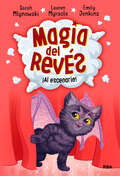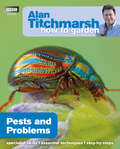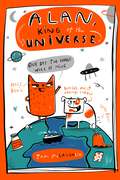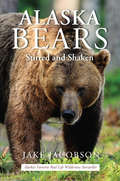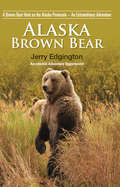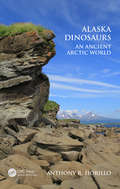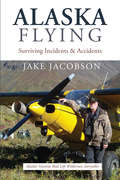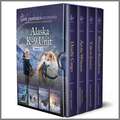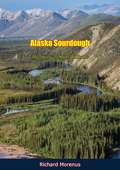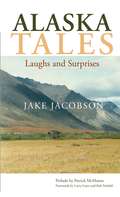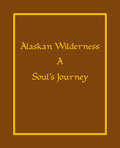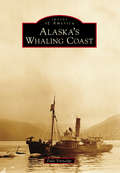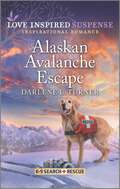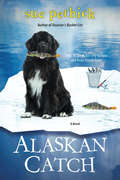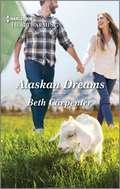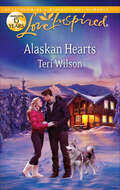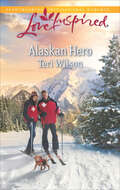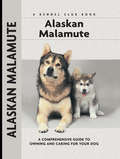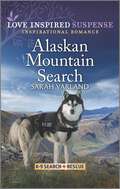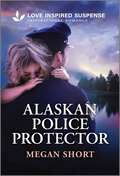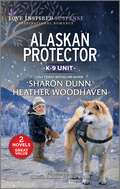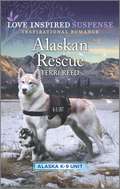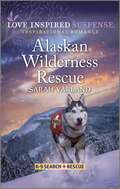- Table View
- List View
Al escenario: Serie Magia del revés - Nº3 (Magia del revés #Volumen 3)
by Sarah MlynowskiSiguen las aventuras en la Escuela de Magia. Cuidado...¡la magia está en el aire! Nory y sus amigos de la clase de Magia del Revés nunca permiten que nada los detenga. ¡Y menos ahora que se acerca el concurso de talentos de la escuela! Por eso, cuando Ellitott sospecha que una espía pretende desvelar los secretos de su actuación para perjudicarlos, el grupo unirá todas sus fuerzas para salir al escenario y llenarlo de magia.
Alan Titchmarsh How to Garden: Pests and Problems (How to Garden #26)
by Alan TitchmarshIn this definitive guide, Alan Titchmarsh addresses key problem areas and provides easy-to-follow guidance on how to protect precious plants. Encouraging gardeners to create healthy ecosystems, Alan talks through the techniques to deal with harmful pests, weeds, diseases and disorders and suggests preventative measures to ensure happy, disease-resistant plants.* Directory of pests and problems with over 200 colour illustrations* Good gardening techniques for preventing disorders* How to select the right plants for the right conditions* Advice on chemical versus nonchemical treatments* Instructions for tackling problems in lawns and borders
Alan, King of the Universe: Book 1 (Alan, King of the Universe #1)
by Tom McLaughlinALAN IS KING OF THE UNIVERSE. Well, not yet. But he WILL be. An orange cat blessed with opposable thumbs, Alan is convinced he was born to rule and spends his days scheming up brilliant plans to fulfil his destiny - from creating a brand-new country, Alanland, to cloning himself in an attempt raise an entire army of Alans. And his slobbery dog sidekick Fido is just happy to be along for the ride!Join these two accident-prone characters on their hilarious adventures as they try to take over the universe - as long as they're home in time for tea, of course.This two-colour graphic novel series for 7+ readers will have kids and their grown-ups rolling around the floor with laughter. Suitable for newly independent readers.
Alaska Bears: Shaken and Stirred
by Jake JacobsonALASKA BEARS: Shaken and Stirred is a collection of 24 stories describing Jake's personal experience hunting and guiding for all the species of bears in Alaska. Bear biology, hunting techniques, cabin depredations and avoidance thereof, and other aspects of bear pursuits are detailed. These are true stories except for the names of some of the hunting guests from Jake's fifty years of living and hunting in Alaska.
Alaska Brown Bear: A Brown Bear Hunt on the Alaska Peninsula – An Extraordinary Adventure
by Jerry EdgingtonFew experiences in life are true adventures; even fewer are truly extraordinary. Rarely, very rarely are they both; where the past and the future collide in an unforgettable present moment. Where the senses, the intellect and the spirit and harmony in the experience. I hadn't imagined that an Alaska Peninsula bear hunt would be one of those adventures. I've experienced moments of truth when hunting—the rush of spotting game, the stalk, and the shot. But that changed on this hunt. Connecting to the transcendent silence of Alaska, nature as pure as it comes; that became my real moment of truth. It became my real world, more than the one I had le behind. My bear hunt was more than I expected and maybe more than I was prepared for, but not more than I wanted, or needed, and in the end it had little to do with getting a bear.
Alaska Dinosaurs, Mammoths, and More
by Kirk Johnson Ray TrollExplore the world of fascinating prehistoric creatures that once roamed ancient Alaska. Packed with vibrant illustrations of dinosaurs by artist Ray Troll and lively text by paleontologist Kirk Johnson, this dynamic picture book is perfect for curious kids ages 8-12 and dinophiles of all ages.This engaging richly illustrated picture book is the perfect introduction to Alaska&’s dinosaurs. It opens with an irresistible, jam-packed map of Alaska fossils, and then proceeds through a timeline of prehistoric creatures that inhabited ancient Alaska&’s oceans and forests.Discover thalattosaurs, giant sea lizards who lived over 200 million years ago, and the mysterious &“desmos,&” a prehistoric marine mammal that looked like a hippo but might be related to horses and rhinos and roamed the region 20 million years ago, and many more!
Alaska Dinosaurs: An Ancient Arctic World
by Anthony R. FiorilloAnthony Fiorillo has been exploring the Arctic since 1998. For him, like many others, the Arctic holds the romance of uncharted territory, extreme conditions, and the inevitable epic challenges that arise. For Fiorillo, however, the Arctic also holds the secrets of the history of life on Earth, and its fossils bring him back field season after field season in pursuit of improving human understanding of ancient history. His studies of the rocks and fossils of the Arctic shed light on a world that once was, and provide insight into what might be.
Alaska Flying: Surviving Incidents & Accidents
by Jake JacobsonLASKA FLYING: Surviving Incidents and Accidents encompass many short stories about Jake's experiences gained from 1967 to the present as a pilot in Alaska. Though he logged time as pilot in command in other parts of the world, including Southern Rhodesia, Namibia, Australia, Bolivia, Hawaii, Arizona and other locations, the stories in this collection relate exclusively to Alaskan flying.
Alaska K-9 Unit Books 5-8: Four Thrilling Suspense Novels (Alaska K-9 Unit)
by Dana Mentink Jodie Bailey Heather Woodhaven Shirlee McCoyLove Inspired Suspense brings you four full-length stories in one collection! Enjoy action-packed stories in the Alaska K-9 Unit series featuring K-9 crime-stoppers solving thrilling mysteries that will keep you on the edge of your seat!This box set includes:DEADLY CARGOby USA Today bestselling author Jodie BaileyFollowing an anonymous tip, K-9 Trooper Will Stryker&’s drug trafficking investigation has a new suspect—Jasmine Jefferson, an Alaskan bush pilot he&’s convinced is hiding something. But when someone tries to kill them, Jasmine confesses she&’s in witness protection. Are the attacks related to the case…or is someone out for revenge?ARCTIC WITNESSby Heather WoodhavenWhen his ex-wife goes missing, Alaska State Trooper Sean West and his K-9 partner rescue her from a kidnapper. Now the criminal is on their trail, and it&’s up to Sean to protect Ivy and the little boy she plans to adopt…before they&’re silenced for good. YUKON JUSTICEby USA Today bestselling author Dana MentinkWith her ruthless uncle sabotaging her family&’s reindeer ranch, K-9 team assistant Katie Kapowski heads home to help—and becomes his target. Alaska State Trooper Brayden Ford and his K-9 partner are the last team Katie wants assigned to guard her. With their rocky past, can they work together…and survive?BLIZZARD SHOWDOWNby New York Times bestselling author Shirlee McCoyAfter months of searching for Violet Jones, Gabriel Runyon and his K-9 finally track her down—just in time to save her from her ex-fiancé. Now they must keep the single mother and her newborn daughter safe. But with a storm rolling in, they&’ll have to outrun a blizzard and an enemy who wants Violet dead…Look for the complete Alaska K-9 Unit series!From Love Inspired Suspense: Courage. Danger. Faith.
Alaska Sourdough: The Story of Slim Williams
by Richard MorenusClyde Charles “Slim” Williams (1881-1974) first arrived in Alaska in 1900 at the age of 19, looking for adventure. He spent the next three decades trapping, hunting, breeding dogs, and blazing trails throughout the frontier.The paths of two rugged adventurers crossed and the result is wonderful entertainment. Pioneer Alaska Sourdough Slim Williams told his life’s story to Dick Morenus, a city-bred man who had lived in the Canadian bush. Because both spoke the language of the North, this story captures the drama and thrills just as Slim experienced them. After reading Alaska Sourdough, you will be as glad as Dick and Slim are that they were fortunate enough to meet.
Alaska Tales: Laughs and Surprises
by Jake JacobsonYou should buy this book. It will make you laugh. It is full of stories you'll want to read again, and again. You'll tell your friends about it. Thinking about it will make you smile during boring meetings. People will wonder what you are up to. On a bad day, when you've screwed up at work, your wife is mad at you, and the kids are sick, this book will give you half an hour's respite. It will take you to a place of adventure, danger, and humor, all woven together by one larger than life character. I had to get all that down fast, because it's important. I'm not a writer, and I don't know how long I can hold your attention. Dr. Larry GatesThe stories in this collection are true. In some instances, the names have been changed to protect the innocent and the not so guiltless. With most days of the past forty-seven years spent in Alaska, the thirty-six stories in this collection are connected primarily with Jake's guiding activities in the Great Land. These stories were selected for their humorous content. This selection of tales is trivial, eclectic, and of minimal redeeming value. But there may be some valuable bits of information, if one looks for them. These stories attempt to entertain readers, to give them a giggle, or at least a wry smirk.
Alaska Wilderness: A Soul's Journey
by Lawrence FeltmanAs it was, in the beginning, is now and ever shall be a world without end.
Alaska's Animals, You And I
by Shannon CartwrightAlaska's Animals shows how various animals are different, comparing things like noses, feet, tails and dwellings with colorful, detailed and clever close-up compositions. All illustrations are accompanied by Shannon Cartwright's lyrical verses that roll.
Alaska's Whaling Coast
by Dale VinnedgeIn 1850, commercial whaling ships entered the Bering Sea for the first time. There, they found the summer grounds of bowhead whales, as well as local Inuit people who had been whaling the Alaskan coast for 2,000 years. Within a few years, almost the entire Pacific fleet came north each June to find a path through the melting ice, and the Inuit way of whaling--in fact, their entire livelihood--would be forever changed. Baleen was worth nearly $5 a pound. But the new trading posts brought guns, alcohol, and disease. In 1905, a new type of whaling using modern steel whale-catchers and harpoon cannons appeared along the Alaskan coast. Yet the Inuit and Inupiat continue whaling today from approximately 15 small towns scattered along the Arctic Ocean and the Bering Strait. Whaling for these people is a life-or-death proposition in a land considered uninhabitable by many, for without the whale, whole villages probably could not survive as they have for centuries.
Alaskan Avalanche Escape (K-9 Search and Rescue #9)
by Darlene L. TurnerSabotage in the mountains… Can this K-9 sniff out the truth? After surviving a sudden avalanche, mountain survival expert Jayla Hoyt and her search-and-rescue K-9 discover that it was no accident—someone deliberately triggered the mountain explosion. To uncover the culprit, she&’ll have to partner with Alaska park ranger Bryson Clarke, a man she doesn&’t trust. But when the investigators become targets, can they capture the criminal mastermind…before they&’re buried alive?From Love Inspired Suspense: Courage. Danger. Faith.K-9 Search and Rescue Book 1: Desert Rescue by Lisa PhillipsBook 2: Trailing a Killer by Carol J. PostBook 3: Mountain Survival by Christy BarrittBook 4: Search and Defend by Heather WoodhavenBook 5: Following the Trail by Lynette EasonBook 6: Dangerous Mountain Rescue by Christy BarrittBook 7: Wilderness Hunt by Lisa PhillipsBook 8: Alaskan Mountain Search by Sarah VarlandBook 9: Alaskan Avalanche Escape by Darlene L. Turner
Alaskan Catch
by Sue PethickA dream job it’s not. But for Emily Prentice, working as a seafood inspector in Ketchikan, Alaska, takes her one step closer to becoming a marine biologist. And it’ll give her a first taste of independence from her overprotective mom and the doctor boyfriend she’s pushing into Emily’s arms. Emily’s certainly not looking for romance . . . until a huge dog knocks her down and sends her flying into fish goo. It’s love at first sight for Emily and Bear, whose handsome owner, Sam, becomes flummoxed when the fallen worker in the hard hat turns out to be a pretty young woman. Emily and Bear begin a beautiful relationship, with Sam in tow. And before long the attraction between the humans becomes undeniable. But separation and a dangerous undertaking soon leave Emily wondering if she’ll lose Sam before she gets to tell him how she really feels . . . Bear wants his humans staying together, and before he’s done, both Emily and Sam will learn one essential canine truth: A dog is the only one on earth who loves you more than you love yourself.Praise for Sue Pethick’s Novels “Quirky characters abound in this gentle romantic comedy with a hint of suspense. But it’s the comic scenes featuring Shep that steal the show. . . . Readers who delight in tales about the bond between people and their dogs will enjoy.” —Booklist on Please Don’t Feed the Mayor“A light, heartwarming read perfect for a wintry afternoon at home or a sunny beachvacation.” —RT Book Reviews on Pet Friendly “Filled with romance, drama, and family love . . . a fun, light hearted read that is sure to give you warm fuzzy feelings. ”—Modern Dog on The Dog Who Came for Christmas “Witty and emotional. . . . Grab a treasured pet and a box of tissues before sitting down to read this endearing tale.” —RT Book Reviews on Boomer’s Bucket List
Alaskan Dreams: A Clean Romance (A Northern Lights Novel #6)
by Beth CarpenterThe dream she wantsThe love she foundLauren Shepherd has traded her hectic office job for a quiet life working on an elderly friend’s farm. Risking everything to move to Alaska might just be the perfect opportunity for her—if Lauren can convince handsome and fiercely protective Patrick O’Shea that she’s not swindling his grandmother. But when financial troubles threaten her dream, Lauren and Patrick unite in a hunt for a legendary treasure…only to discover something between them more precious than gold.
Alaskan Hearts
by Teri WilsonFormer Alaskan sled-dog musher Ben Grayson is still grieving the tragic loss of his dog team. So much that he put the reins-and his dreams-away.Now a photographer, Ben's covering the Gold Rush Trail sled-dog race. He's surprised his heart isn't more guarded around lovely journalist Clementine Phillips-until he learns that Clementine plans to handle a sled-dog team herself. Ben can't bear the thought of Clementine in danger.So he comes up with a compromise-one to keep her close...forever.
Alaskan Hero
by Teri WilsonMelting His HeartNever stay in one place too long. These are the words Brock Parker lives by. Roaming the world to save avalanche victims keeps the search-and-rescue patrolman from getting too close to anyone. The resort ski town of Aurora is no different. Until Brock meets Anya Petrova. The Alaska native needs someone to train her dog. Who better than the man who works wonders with his canine rescue team? Haunted by a family tragedy, Brock doesn't think he's anyone's hero. But Anya refuses to believe that. And when she shows her true mettle in the face of breathtaking danger, Brock realizes what he'll risk for the woman whose love has healed his heart.
Alaskan Malamute
by Thomas StockmanThis Comprehensive Owner's Guide to the Alaskan Malamute serves as a complete introduction to this hauling and racing snow dog. An undeniably impressive Arctic breed, the Alaskan Malamute with its powerful build, classic Nordic features, including its dark mantle, cap over its head, and plumed is a cherished purebred dog, a member of the Working Group, a family companion, and true outdoor sportsman. The book begins with a fascinating chapter on the breed's history with the Mahlemut people in Alaska, followed by chapters on characteristics and the breed standard encapsulating all of the virtues of this powerhouse working dog, offering sound advice about which owners are best suited to the breed.New owners will welcome the well-prepared chapter on finding a breeder and selecting a healthy, sound puppy. Chapters on puppy-proofing the home and yard, purchasing the right supplies for the puppy as well as house-training, feeding, and grooming are illustrated with handsome Malamute adults and puppies bursting with personality! In all, there are over 135 photographs in this compact, useful, and entertaining volume. The author's advice on obedience training the very intelligent but sometimes stubborn Alaskan Malamute will help readers better mold and train their dogs into the most socialized, well-mannered Malamutes in the neighborhood. The extensive chapter on healthcare written by Dr. Lowell Ackerman provides up-to-date detailed information on selecting a qualified veterinarian, vaccinations, parasites, infectious diseases, and more. Sidebars throughout the text offer helpful hints, covering topics as diverse as historical kennels, toxic plants, first aid, crate training, carsickness, fussy eaters, and parasite control. Fully indexed.
Alaskan Mountain Search (K-9 Search and Rescue #8)
by Sarah VarlandA missing teen, a killer on the prowl… This K-9&’s on the case. In the Alaskan wilderness, there&’s only one way to track a serial killer: a K-9. For police captain Bre Dayton, that means working with her ex, search and rescue worker Griffin Knight. With her niece missing and possibly kidnapped, Bre has to find the murderer known as the Echo Pass Hunter—fast. Even if it means trusting the man who broke her heart…and putting herself in the killer&’s crosshairs.From Love Inspired Suspense: Courage. Danger. Faith.K-9 Search and Rescue Book 1: Desert Rescue by Lisa PhillipsBook 2: Trailing a Killer by Carol J. PostBook 3: Mountain Survival by Christy BarrittBook 4: Search and Defend by Heather WoodhavenBook 5: Following the Trail by Lynette EasonBook 6: Dangerous Mountain Rescue by Christy BarrittBook 7: Wilderness Hunt by Lisa PhillipsBook 8: Alaskan Mountain Search by Sarah VarlandBook 9: Alaskan Avalanche Escape by Darlene L. Turner
Alaskan Police Protector
by Megan ShortTo save a child, he has to risk his own life. When a minivan slides off the road into an icy lake, Officer Samuel Miller narrowly rescues a woman and child from certain death. Only, Rachel Harding insists the crash is no accident—it&’s eerily similar to how her sister and brother-in-law recently died. As the unexplained attacks escalate, Samuel is determined to protect Rachel and her orphaned niece at all costs. But when they make a shocking discovery, their investigation becomes even more dangerous, and survival may be impossible.From Love Inspired Suspense: Courage. Danger. Faith.
Alaskan Protector
by Sharon Dunn Heather WoodhavenTarget of a killerUndercover Mission by Sharon DunnUndercover on a cruise ship with her K-9 dog, Alaska State Trooper Maya Rodriguez uses herself as bait to catch a murderer. And security officer David Garrison is the only person she can trust with the truth. But with a possible serial killer dead set on taking out anyone who stands in the way, will Maya and David make it off the ship alive?Arctic Witness by Heather WoodhavenWhen his ex-wife goes missing in the wilderness, Alaska State Trooper Sean West and his K-9 partner rescue her from a kidnapper. But survivalist expert Ivy West saw the face of a murderer and now she and her foster child are targets. Now Sean must protect them and confront what drove him and Ivy apart…or risk losing the family he never thought he wanted.USA TODAY Bestselling Author Sharon Dunn2 Thrilling Stories Undercover Mission and Arctic Witness
Alaskan Rescue (Alaska K-9 Unit #1)
by Terri ReedA mountain search-and-rescue missionturns into a fight for their lives.Sent to find a wedding party that disappeared during a hike, Alaskan state trooper Hunter McCord and his K-9 partner, Juneau, discover bridesmaid Ariel Potter hanging from a cliff. But this was no accident—she was pushed—and her hiking companions are missing. Now it’s up to Hunter and Juneau to find them…and make sure whoever wants Ariel dead doesn’t finish the job.From Harlequin Love Inspired Suspense: Courage. Danger. Faith.Alaska K-9 UnitBook 1: Alaskan Rescue
Alaskan Wilderness Rescue (K-9 Search and Rescue #11)
by Sarah VarlandA missing person rescue is now a K-9 manhunt for a killer… A missing person case sends search and rescue worker Elsie Montgomery and her K-9 to a remote Alaskan island…only to discover she&’s got a target on her back. Now she must partner with pilot Wyatt Chandler, the one man she doesn&’t trust, to stay alive while confronting her shadowy past. But can they capture a killer before their time together runs out for good?From Love Inspired Suspense: Courage. Danger. Faith.K-9 Search and Rescue Book 1: Desert Rescue by Lisa PhillipsBook 2: Trailing a Killer by Carol J. PostBook 3: Mountain Survival by Christy BarrittBook 4: Search and Defend by Heather WoodhavenBook 5: Following the Trail by Lynette EasonBook 6: Dangerous Mountain Rescue by Christy BarrittBook 7: Wilderness Hunt by Lisa PhillipsBook 8: Alaskan Mountain Search by Sarah VarlandBook 9: Alaskan Avalanche Escape by Darlene L. TurnerBook 10: Tracking Stolen Treasures by Lisa PhillipsBook 11: Alaskan Wilderness Rescue by Sarah VarlandBook 12: Lethal Mountain Pursuit by Christy Barritt
